Polyurethane skirting boards: from selection to installation
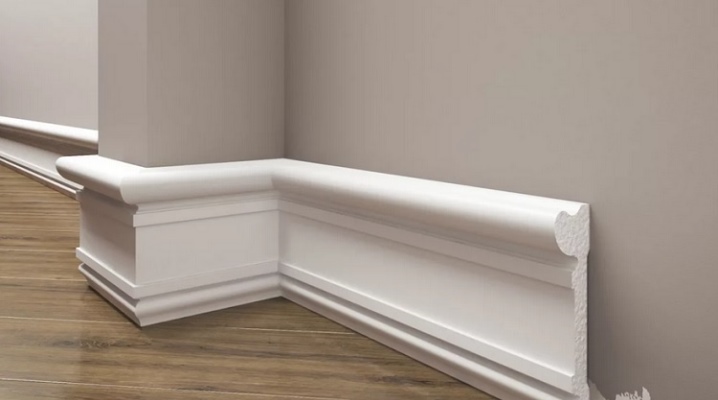
In a modern interior, the skirting board (aka molding, fillet, profile) is an integral part of the design. This decorative detail helps to create a beautiful transition between the flooring and the wall or between the wall and the ceiling, masks the wiring of the electrical cable, sets the accents of the decor.
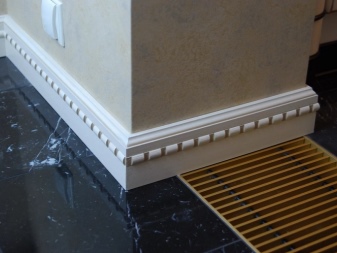
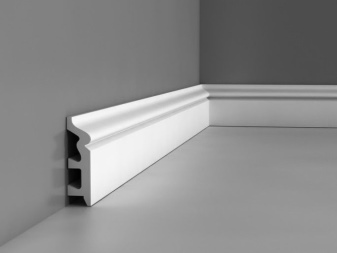
One of the options for decorative skirting boards is a polyurethane fillet, which is flexible and durable. Using this element, you can not only decorate the floor or ceiling, but also decorate the walls with columns made in different styles.
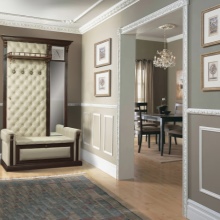
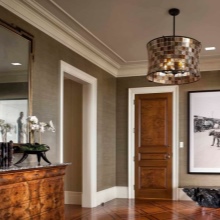
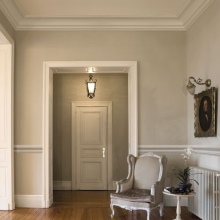
Peculiarities
Polyurethane material is a modern polymer that is widely used in many areas of human life. Finished polyurethane products are durable and do not emit harmful components into the external environment, therefore products from this material are widely used for interior decoration. The most popular product for decoration is a polyurethane skirting board, which has a number of advantages.
- Long service life. The polyurethane skirting board retains its aesthetic appearance for at least 35 years. This material is not able to absorb odors, it is resistant to mechanical stress, moisture resistant and environmentally friendly.
- Wide temperature range. The material can withstand high temperature loads of both positive and negative values. Polyurethane does not melt, shrink or lose its shape. It can be used in an unheated home, placed on the ceiling near a gas stove, or on the floor next to a hot fireplace. Cold and heat will not harm the material in any way.
- Fast and easy installation. Plastic skirting boards made of polyurethane can be glued to the ceiling or floor surface even by those who do not have special finishing skills. The flexible profile evens out minor surface irregularities, hides the curvature of walls or floors, does not require perfect alignment of work surfaces. There is no risk of damaging the fillet during installation work.
- Good machinability. Polyurethane can be cut with a knife or sawed off with a miter saw. If necessary, the surface of the skirting board can be painted with acrylic paint or water spray.
- Easy care. Polyurethane products can be wet processed or dry cleaned. In this case, the fillet and its painted surface will not lose their shape and color. If necessary, you can use detergents to care for the skirting board.
- Variety of shapes and designs. The choice of plinths is quite wide: from sleek and austere options to artsy and curly elements. Polyurethane fillets can be selected for any interior style. Many types of skirting boards contain channels for cable routing or niches for installing lighting.
The disadvantage is the high cost. Despite the variety of options, all polyurethane skirting boards are divided into 2 large categories: floor and ceiling options.
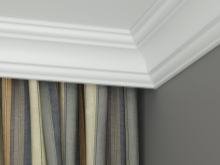
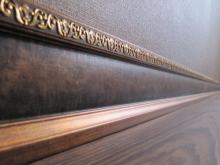
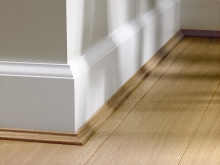
Views
The polyurethane skirting board has distinctive features not only in the design of its surface, but also in shape, as well as in the way of installation. There are several types of this finishing material.
- Wide skirting board - this type of product covers a fairly large area of the working surface of the ceiling or wall. Most often, such fillets are used in rooms with a high ceiling level, since a visually wide plinth hides free space. A wide, shaped skirting board with a niche can be installed on the ceiling where a backlit design is required.
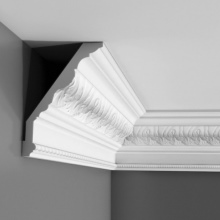
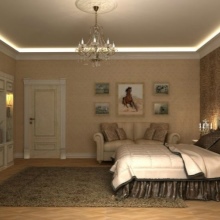
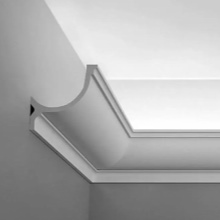
- Radius skirting board - This is a flexible version of the fillet, which is used to decorate columns or rounded arches. This type of skirting board has the ability to adhere well to rounded curves, completely repeating their shape.
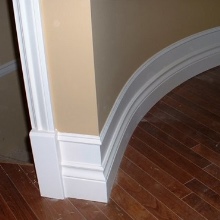
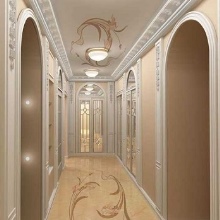

- Connected option - this type of product implies the introduction of a part of the floor covering into its structure, for example, carpet or linoleum. Thus, the transition of the floor covering to the wall is carried out, which creates the possibility of protecting the lower part of the wall and realizes an original design solution.
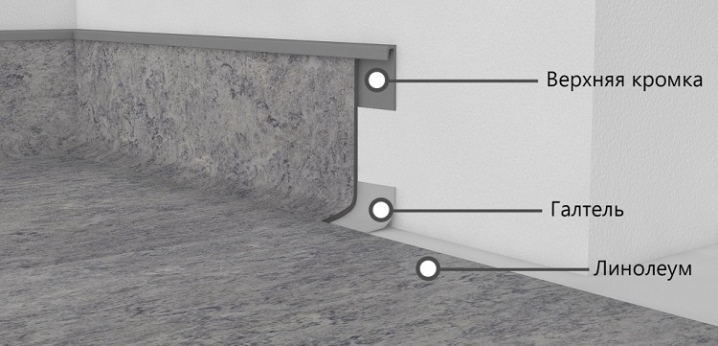
- Hidden skirting board - used to mask the joints between the floor and the wall. Such decor is placed in line with the wall. In addition to the decorative function, the skirting board protects the area where the floor and wall meet from dust. The simplicity and conciseness of this option make it possible to use it in various interior style solutions.
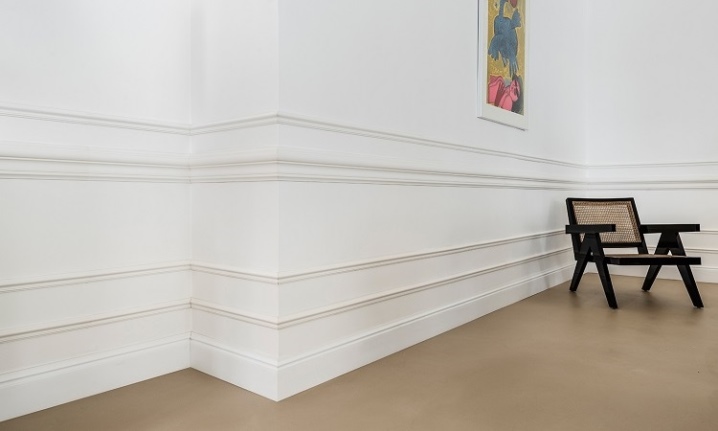
- Skirting board with cable duct - the design of such a product provides for the presence of recesses in which you can place external electrical wiring. In addition to the decorative function, such a plinth helps to solve the problem of masking wires that need to be hidden from prying eyes.
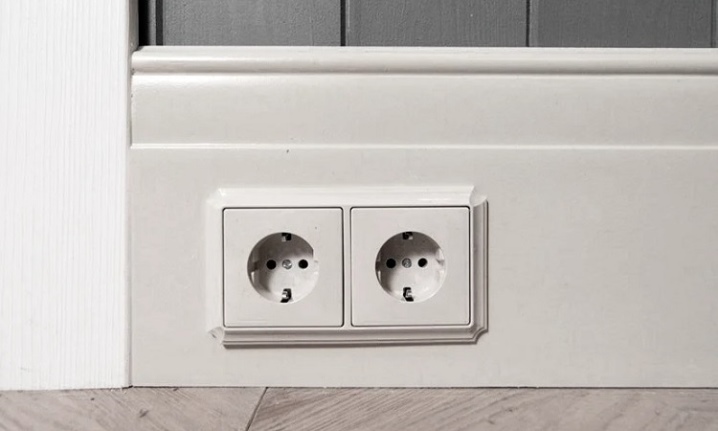
- Self-adhesive option - the fillet on the back has adhesive tape. After removing the protective layer, the skirting board can be attached to the working surface of the ceiling or wall using a tape. This option is convenient in that you do not need to spend additional funds on the purchase of mounting glue.
From the point of view of design, the plinth can be absolutely smooth, imitate plaster molding, be decorated with decorative elements in the form of beads or volumetric geometric ornament. Manufacturers produce polyurethane fillets white or paint them.
White products are considered the most versatile, since it is quite simple to paint them in the desired shade.
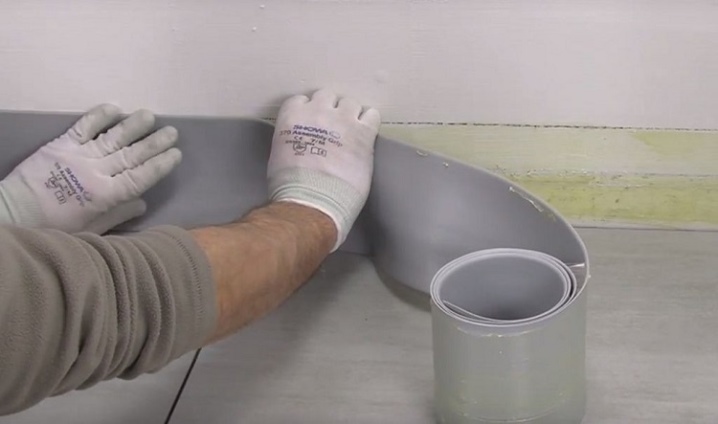
Dimensions (edit)
Manufacturers of polyurethane fillets produce standard-sized products with various designs. In some cases, it is possible to issue batches under an individual order. Polyurethane skirting boards have 2 main parameters.
- Length of the product. The standard size is a length of 2 or 2.5 m. There are fillets with a length of 1.2 m. It is very rare to find a plinth with a length of 3 m, designed for rooms with large dimensions.
- Skirting board width. The wide version can reach 25–30 cm. Most often, options from 3 to 15 cm are used. In small rooms, it is advisable to use fillets, the width of which is 5–10 cm.
The best visual effect can be achieved with the correctly selected baseboard width, therefore, the main attention when choosing a polyurethane finish should be given to this parameter.

Applications
Not only the floor, wall or ceiling, but also the staircase is subject to decorative finishing with polyurethane skirting boards.
- Ceiling. With the help of a ceiling molding, you can eliminate minor irregularities not only in the ceiling, but also in the walls, giving the room an aesthetic and modern look. This finish rounds off sharp corners, and at the same time visually lifts the ceiling. The polyurethane material can also be used in oval-shaped rooms, since the elasticity of the skirting board allows it to bend around surfaces even with a small radius. In addition, ceiling fillets are used to decorate bay windows, columns and are used for the manufacture of multi-tiered ceiling structures.
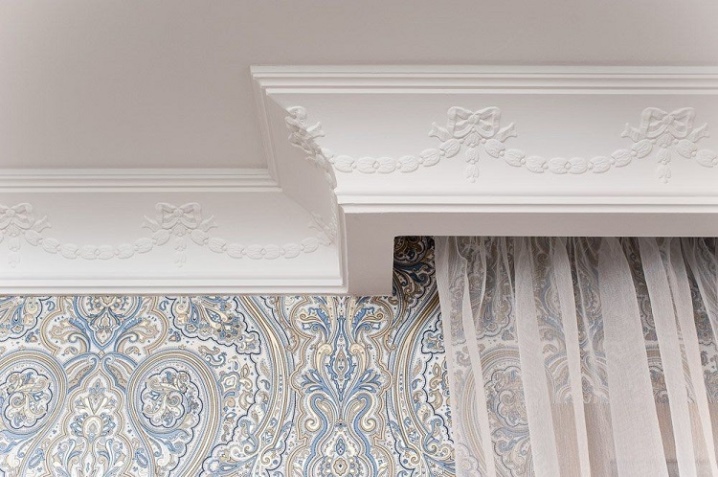
- Flooring. The skirting board helps to decorate the joints, as well as cracks, small defects and irregularities that form at the junction points of the wall and floor.Polyurethane skirting boards are also wall protection against mechanical damage. Floor molding options can have cable ducts for electrical wiring, which eliminates the time-consuming process of wall chasing. It is believed that the installation of a floor plinth is much easier and faster than a ceiling version.
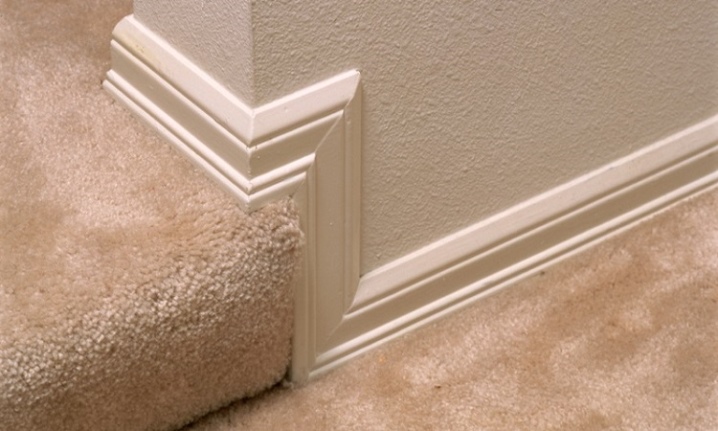
- Skirting board for stairs. With its help, the gaps formed during the installation of the steps between the staircase and the wall are closed. The staircase acquires an aesthetic and complete appearance if a narrow plinth is used for the joints, with the help of which not only the installation flaws are masked, but also visually delimited vertical and horizontal surfaces. A protective skirting board between the wall and the stairs prevents dust and debris from entering the gaps between the wall and the steps, and in addition, the polyurethane molding protects the surfaces from mechanical damage, thereby extending their service life.
Polyurethane moldings fulfill not only a practical role, but also an aesthetic one. This design element brings a touch of originality to the interior and makes it possible to implement any creative projects.
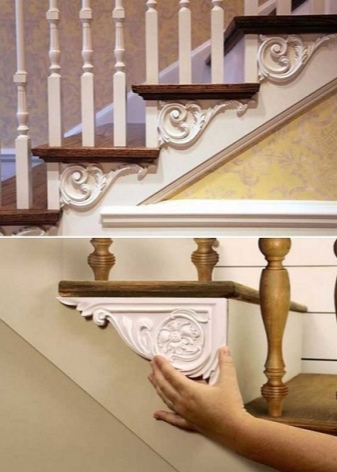
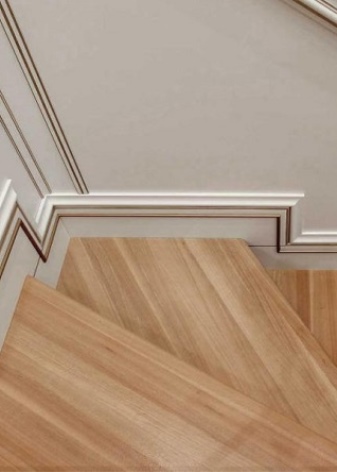
What is it combined with?
The designer polyurethane skirting board has one unique feature: it goes well with any type of wall or floor covering. Combination options may be different.
- Parquet floor. Light polyurethane molding looks equally beautiful against the background of light and dark shades of parquet boards. For absolute harmony, it is better to choose contrasting combinations of dark and light shades.
- Linoleum. This type of flooring is considered the most budgetary, but even for it, the combination with a polyurethane skirting board will be an interesting design solution.
- Carpet. The flooring is combined with moldings in both home and office interiors. The main condition for a harmonious combination is that the carpet has a low pile height.
- Laminate. For interior decoration, where a laminated panel is used as a floor covering, moldings are most often used, the surface of which has a varnish coating. In this case, you can achieve the most effective combination of 2 materials of different textures.
As for the combination of the plinth with the wall surface when finishing the ceiling, then in this case there are no restrictions either. The material looks good next to textured plaster, ordinary wallpaper and paintable, ceramic tiles, wall panels. Most often, polymer moldings are used to decorate rooms in the Art Nouveau, Baroque, Empire style.
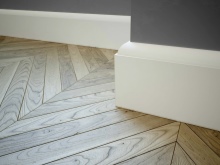
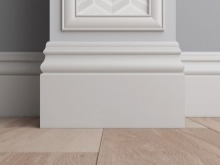
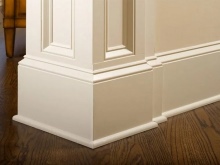
Subtleties of installation
Installation of a polyurethane fillet is quick, even without any special skills. In order to fix the decor to the walls or ceiling correctly, it is necessary to divide the installation process into several successive stages.
For information on how to glue a polyurethane skirting board, see the next video.
Markup
Before starting the installation, markings are made by pressing the plinth to the wall and making marks. Places of joints and additions must also be marked on the working surface in advance. On polyurethane, markings are made using an ordinary pencil - according to these marks, in the future it will be necessary to cut the plinth. When marking, you need to try to save material so that the joints of individual elements are as small as possible.
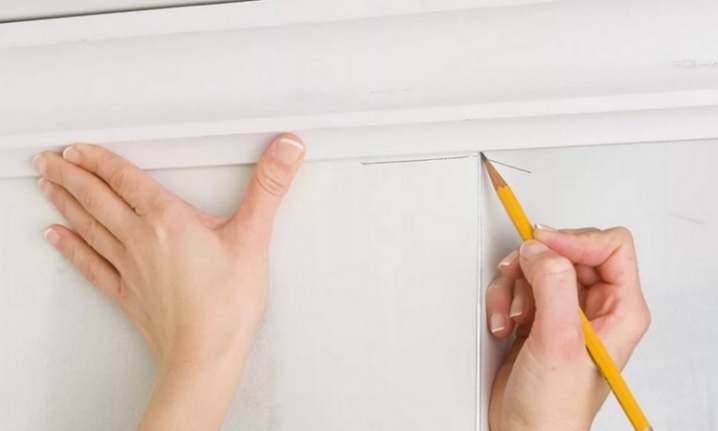
Cut open
You can use a utility knife blade or a miter saw to cut the molding. The work is greatly simplified if you use a joinery miter box. Adjusting difficult corners due to the curvature of the walls can lead to errors, therefore, it is necessary to mount the skirting board only after trying on all the elements to the gluing site. To save expensive material, it is recommended that you first cut the corner joints, and then adjust the parts to length.
In some cases, the cutting of the skirting board can be simplified by purchasing ready-made corner joints, while all that remains is to cut the material to length.
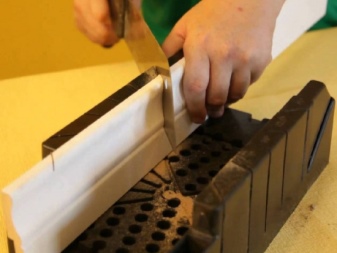
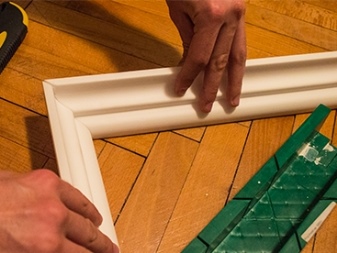
Installation
Installation of fillets begins from the far corner of the longest wall. An adhesive composition is applied to the surface of the plinth, the glue is distributed evenly, then the part is brought to the wall and pressed. It is necessary to press the molding in several places at once, so the gluing of long elements is performed together with an assistant. After the glue has polymerized, the lower edge of the skirting board must be treated with an acrylic sealant to remove all gaps and ensure the most tight fit of the material to the working surface.
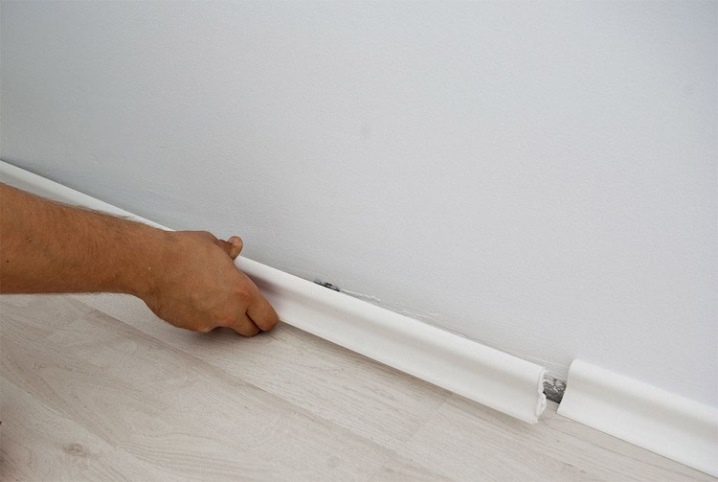
Painting
Before painting, you need to clean the outer side of the skirting board from excess glue, sealant, putty, and also remove dust with a damp cloth. This important step cannot be ignored as the paint may not be uniformly applied to the surface of the product. Wallpaper or a plastered wall is protected with masking tape. For work, choose a brush, the width of which corresponds to the width of the plinth. The coloring composition is applied to the polyurethane molding in 2 layers.
If a water-based composition is used for work, then after applying the first layer of paint, it is allowed to dry for 12 hours and only after that the second layer is applied. The most convenient way to paint the plinth is with an aerosol can - the paint lays down in an even thin layer. It is recommended to carry out work performed on installation and painting of polyurethane decor in a room with a normal level of humidity and avoid drafts.
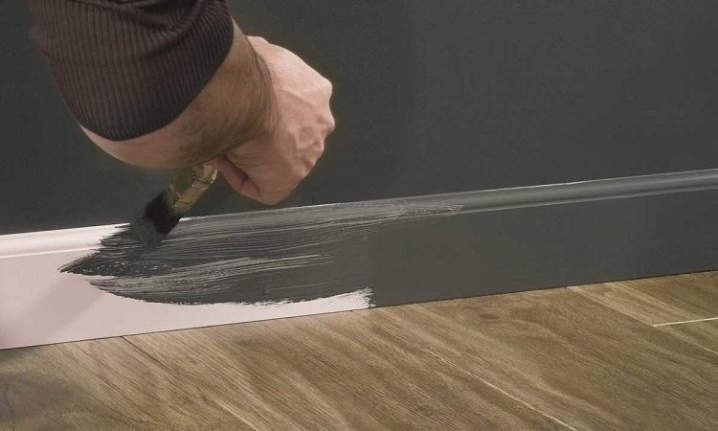
Beautiful examples in the interior
Decorative polymer molding is able to transform any interior, bringing in it a unique charm and personality. Modern interiors place increased demands on design, and you can cope with this task by adding a decorative skirting board as a finish. The design options for a modern interior are endless, you can make a simple design or the most complex one using a baseboard made of polyurethane material, affordable and varied in design. Let's consider the most interesting options for using a plinth made of polymer material in design.
- The classic smooth skirting board is used to decorate walls, doorways and ceilings.

- Polyurethane plinth decorates the interior arch, decorates the surface of the ceiling, and is used to decorate the fireplace and walls.

- The skirting board is used to create a multi-tiered ceiling with hidden lighting. The ceiling surface is also decorated with polyurethane moldings.
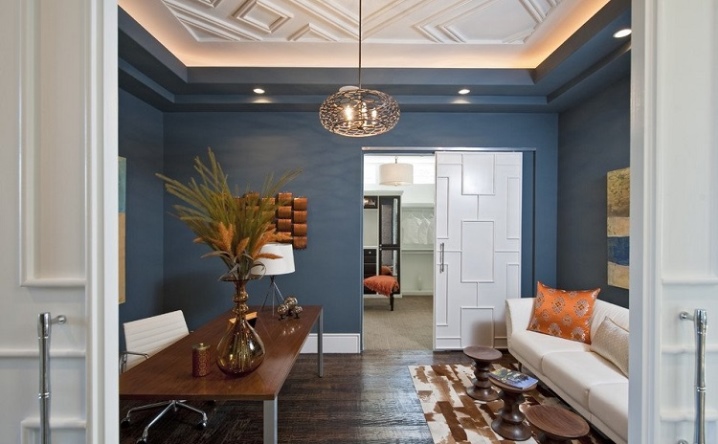
- The room is made in the Baroque style, with a polyurethane finish imitating stucco molding.
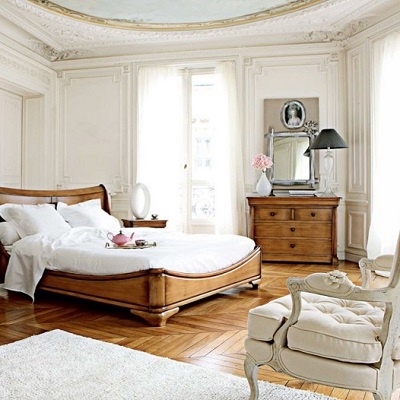
- This option surprises with its simplicity and brevity. A wide ceiling molding ties the entire composition together.
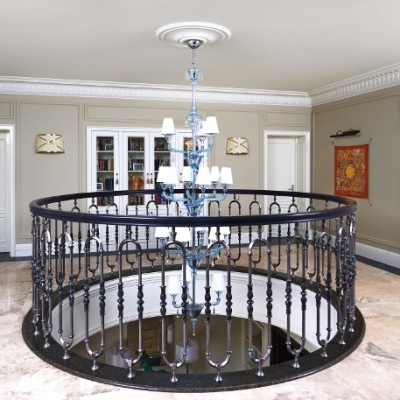













The comment was sent successfully.